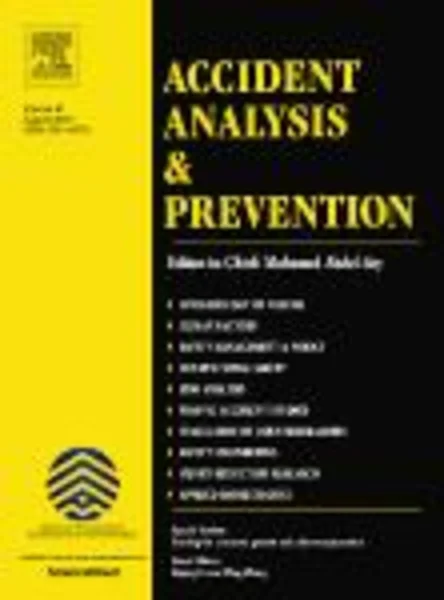-
population behavioral scenarios influencing radiological disaster preparedness and planning
جزئیات بیشتر مقاله- تاریخ ارائه: 1392/01/01
- تاریخ انتشار در تی پی بین: 1392/01/01
- تعداد بازدید: 648
- تعداد پرسش و پاسخ ها: 0
- شماره تماس دبیرخانه رویداد: -
considerable attention is focused on plans for sheltering or evacuating the population of the us national capital region in response to a regional emergency such as a terrorist attack or natural disaster. such planning engages multiple disciplines spanning infrastructure engineering, emergency management, health care, mass communication, water and food supply, logistics, and others. knowledge of population behaviors should influence the many dimensions of protection, prevention, response, and recovery. of particular interest are the behaviors and needs of the resident and non-resident populations in the aftermath of a regional disaster, including those at home, at work, and traveling. the authors deployed a 30-min telephone survey to 2700 residents of the region to gain knowledge of their intended behaviors in the event of a variety of potential dirty bomb attacks. the survey provides a unique foundation for the current paper. the paper will identify and model the assumptions of population behaviors that most affect agency priorities for emergency planning including regional sheltering and evacuation following a radiological disaster such as a dirty bomb. the technical approach assessed several planning initiatives across performance criteria derived from strategic plans and applied combinations of behavioral assumptions to vary the relative importance of each criterion. the results reveal the behavioral scenarios that are most significant to the prioritization of planning initiatives and identify the highest and lowest priority initiatives across the criteria used.
مقالات جدیدترین رویدادها
-
استفاده از تحلیل اهمیت-عملکرد در ارائه الگوی مدیریت خلاقیت سازمانی و ارائه راهکار جهت بهبود
-
بررسی تاثیر ارزش وجوه نقد مازاد بر ساختار سرمایه شرکت های پذیرفته شده در بورس اوراق بهادار تهران
-
بررسی تأثیر سطح افشای ریسک بر قرارداد بدهی شرکت های پذیرفته شده در بورس اوراق بهادار تهران
-
بررسی تأثیر رتبه بندی اعتباری مبتنی بر مدل امتیاز بازار نوظهور بر نقد شوندگی سهام با تأکید بر خصوصی سازی شرکت ها
-
تأثیر آمیخته بازاریابی پوشاک ایرانی بر تصویر ذهنی مشتری پوشاک ایرانی (هاکوپیان)
-
سنجش میزان رضایت ساکنین از شاخص های کمی و کیفی مسکن مهر (نمونه موری: مسکن مهر شهر خرم آباد)
-
تاملی نو در مبانی فقهی وجوب حکم حجاب بانوان
-
تعیین پیکربندی بهینه میراگرهای فلزی در قاب فولادی با استفاده از روش تحلیل زمان دوام
-
energy bound for sign changing solutions of an asymptotically linear elliptic equation in rn
-
aggregation of nanoparticles in high ionic strength suspensions: effect of hamaker constant and particle concentration
مقالات جدیدترین ژورنال ها
-
مدیریت و بررسی افسردگی دانش آموزان دختر مقطع متوسطه دوم در دروان کرونا در شهرستان دزفول
-
مدیریت و بررسی خرد سیاسی در اندیشه ی فردوسی در ادب ایران
-
واکاوی و مدیریت توصیفی قلمدان(جاکلیدی)ضریح در موزه آستان قدس رضوی
-
بررسی تاثیر خلاقیت، دانش و انگیزه کارکنان بر پیشنهادات نوآورانه کارکنان ( مورد مطالعه: هتل های 3 و 4 ستاره استان کرمان)
-
بررسی تاثیر کیفیت سیستم های اطلاعاتی بر تصمیم گیری موفق در شرکتهای تولیدی استان اصفهان (مورد مطالعه: مدیران شرکتهای تولیدی استان اصفهان)
-
ارزیابی تأثیر ارتباطات سازمانی اثربخش بر بهبود خلاقیت سازمانی و شکل گیری همدلی سازمانی
-
استفاده صلح آمیز از انرژی هسته ای از منظر حقوق بین الملل با تاکید بر بیانات رهبری
-
کاربرد ابزار هوش مصنوعی در پیش بینی مصرف انرژی ساختمان
-
تأثیر تمرینات پیلاتس بر نیمرخ لیپیدی زنان غیر فعال دارای اضافه وزن
-
electrochemical sensors; types and applications in the food industry




سوال خود را در مورد این مقاله مطرح نمایید :